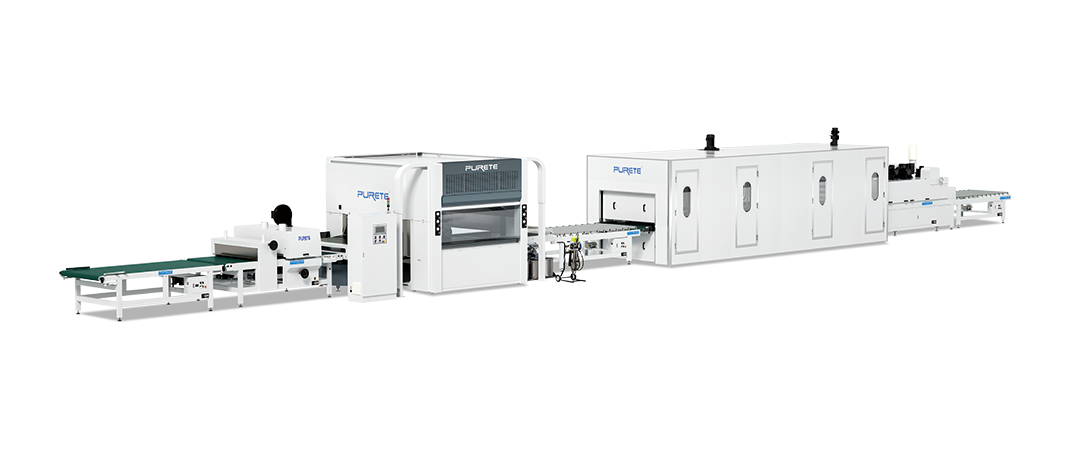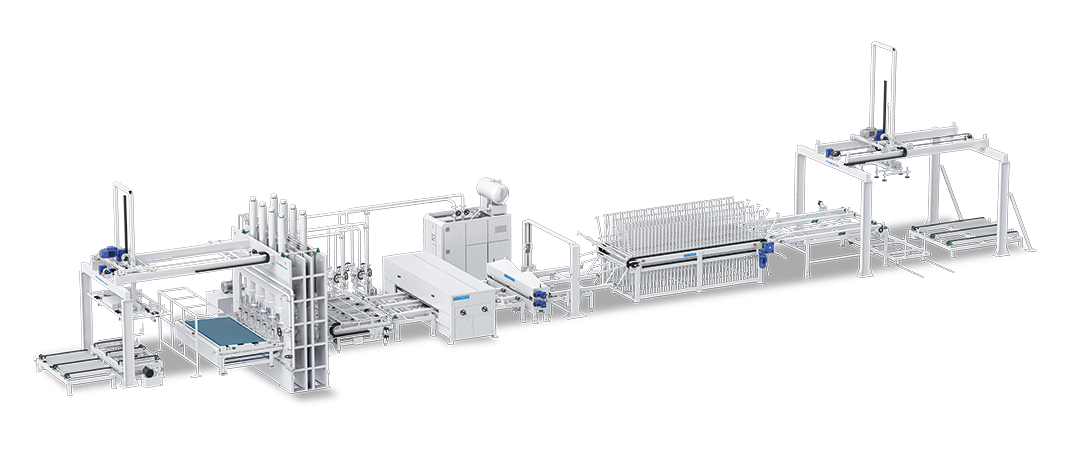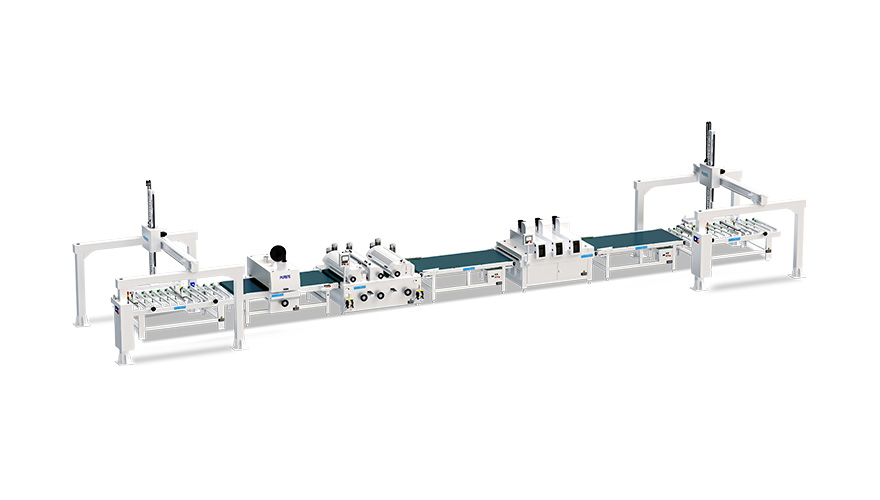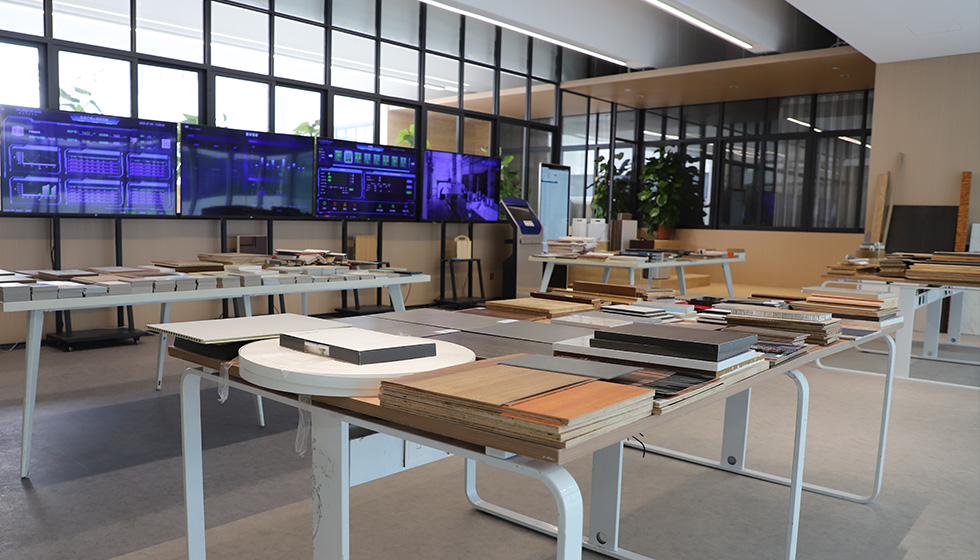How Does the SCP3 Short-Cycle Pressing Production Line Achieve Efficient Laminating Production?
 January 17, 2025
January 17, 2025 Hits:99second
Hits:99secondThe SCP3 short-cycle pressing production line represents a technological breakthrough in efficient laminating production, specifically for wood-based panels, decorative laminates, and furniture components. By integrating advanced technology, automation, and optimized processes, the SCP3 system ensures superior production efficiency, high-quality output, and operational reliability. This article delves into the key technologies and mechanisms that enable the SCP3 production line to achieve its high-efficiency goals.
1. Advanced Pressing Technology for Consistent Results
1.1 Precision Temperature and Pressure Control
The SCP3 short-cycle press incorporates state-of-the-art temperature and pressure management systems. These systems allow for precise control of pressing parameters, ensuring even heat distribution and consistent pressure across the entire panel. This results in uniform lamination with no warping or surface defects.
1.2 Rapid Heating and Cooling Cycles
The pressing line utilizes efficient thermal conduction systems that significantly reduce heating and cooling times. This quick cycle technology accelerates production without compromising the quality of the laminates, enabling the line to process multiple panels within a shorter timeframe.
1.3 Customizable Pressing Modes
The SCP3 system offers flexible pressing programs that can be customized based on material type, thickness, and design requirements. Whether processing high-pressure laminates (HPL) or melamine-coated boards, the machine can adapt to diverse production needs with minimal setup time.
2. High Automation for Enhanced Productivity
2.1 Automated Loading and Unloading Systems
The SCP3 production line features fully automated loading and unloading mechanisms. These systems ensure seamless material handling, reducing manual labor requirements and minimizing production bottlenecks. Robotic arms or conveyors efficiently position panels and decorative layers for pressing, streamlining the workflow.
2.2 Integrated Quality Monitoring
Real-time sensors and monitoring devices embedded in the system detect irregularities during the pressing process. Parameters such as temperature, pressure, and laminate alignment are continuously tracked, ensuring each product meets the desired quality standards without additional rework.
2.3 Digital Twin Technology
The adoption of digital twin models enables manufacturers to simulate the entire pressing process virtually. This technology helps identify inefficiencies, optimize machine settings, and predict maintenance needs, further enhancing the overall production efficiency.
3. Optimized Workflow Design for Continuous Operation
3.1 High-Speed Feeding Systems
The SCP3 line is equipped with high-speed feeding systems that synchronize with the pressing cycle. This ensures a continuous flow of materials, eliminating delays between cycles and maximizing the utilization of the press.
3.2 Multi-Layer Pressing Capability
For operations requiring high output, the SCP3 system offers multi-layer pressing options. This feature allows several panels to be pressed simultaneously, significantly boosting throughput without increasing the footprint of the production line.
3.3 Energy-Efficient Operation
Energy efficiency is a key aspect of the SCP3 design. With optimized thermal systems, low-energy hydraulic drives, and intelligent power management, the line achieves substantial energy savings while maintaining peak performance.
4. Enhanced Surface Finishing and Customization
4.1 Precision Decorative Overlay Alignment
The SCP3 line ensures exact alignment of decorative overlays, such as melamine-impregnated papers, with the substrate. This precision guarantees that the final product meets aesthetic and functional requirements.
4.2 Surface Texture Options
With advanced pressing plates or embossing rolls, the SCP3 system can produce a variety of surface textures, including matte, glossy, wood grain, and custom designs. This versatility caters to diverse market demands for decorative panels.
4.3 Low-VOC Lamination Process
The pressing line supports the use of low-VOC adhesives and environmentally friendly coatings, meeting stringent environmental regulations while producing high-quality, sustainable products.
5. Intelligent Maintenance and Operational Reliability
5.1 Predictive Maintenance Systems
The SCP3 production line is equipped with IoT-enabled predictive maintenance systems. These systems monitor the performance of critical components, such as hydraulic systems and thermal units, and provide alerts for maintenance needs before failures occur. This minimizes downtime and extends equipment lifespan.
5.2 User-Friendly Control Interface
The intuitive control panel simplifies machine operation, allowing operators to set parameters, monitor production status, and troubleshoot issues efficiently. Advanced software integration enables remote monitoring and diagnostics, further improving operational reliability.
The SCP3 short-cycle pressing production line achieves efficient laminating production through a combination of advanced pressing technology, high automation, optimized workflow design, and intelligent maintenance systems. Its precision, adaptability, and energy-efficient operation make it an ideal solution for manufacturers aiming to enhance productivity, reduce costs, and produce high-quality laminated panels. As the demand for innovative, eco-friendly laminates continues to grow, the SCP3 production line sets a new benchmark for efficiency and performance in the industry.















